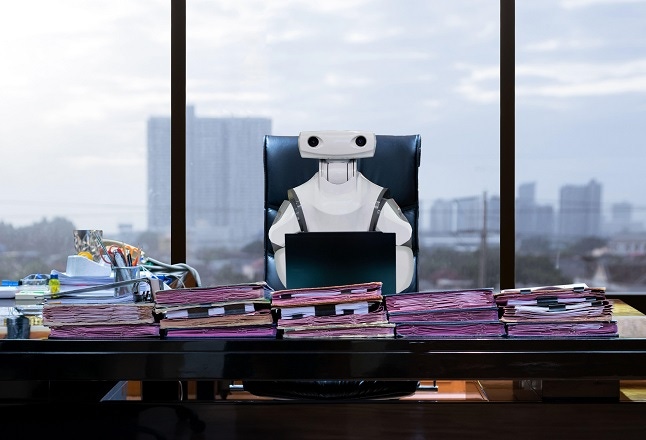AI’s ability to make predictions and offer recommendations is advancing rapidly. Will it eventually gain the ability to lead IT teams?

In the brave new world of artificial intelligence, it seems possible that future IT team members may find themselves following instructions issued by an AI technology.
With sufficient data to train the neural network of an AI algorithm -- essentially advanced mathematical models -- an AI solution could be coached to lead routine processes, says Steven Karan, vice president and data and insights leader at business advisory firm Capgemini Canada.
As algorithms become more capable, and leaders gain enough experience to trust their recommendations, AI could begin proactively alerting, recommending, or taking action in specified situations, says Anita Williams Woolley, a professor of organizational behavior and theory at Carnegie Mellon University’s Tepper School of Business. Algorithms could, for example, provide human IT leaders with alerts spurred by suspicious activity levels, and provide preliminary diagnoses of developing issues and recommended actions.
Future AI Team Leadership
The future of AI team leadership depends mostly on the timescale, says Sam Gantner, chief product officer at digital workplace provider Nexthink.“If we’re talking about AI with similar capabilities than what’s state of the art today … we’re still far from being able to replace an IT team leader,” he observes. “However, if you look at how fast AI is evolving, then ... in a couple of our human generations AI will be able to perform most human jobs.”
Still, when it comes to transactional IT teams, such as help desks, AI leadership is already close to reality, Karansays. He notes that many leading IT service management (ITSM) technologies now offer virtual agents with embedded AI to provide a form of predictive intelligence. “With enough quality data, these capabilities could be leveraged to advance AI capabilities,” Karan explains. “The leap from AI-based virtual agent to AI-based team leader for ITSM is possible within the next three to five years.”
In the meantime, as algorithms grow increasingly capable, AI could begin functioning as a trusted advisor, helping a human IT leader by proactively alerting, recommending, or even taking action in specified situations, particularly in employee-related matters. “For instance, algorithms could support leaders with alerts related to different types of activity levels in groups of employees and provide preliminary diagnoses about issues that are developing and recommend actions,” Woolley says. “This could be based on communication activity or work activity in digital environments, physical activity in a building, movement of resources between different units, or through transactions with others outside the organization.”
The Human Connection
Ola Chowning, a partner with technology research and advisory firm ISG, doesn’t expect AI leaders to arrive anytime soon. She notes that many IT team members are already struggling with human interactions conducted via services like Teams and Zoom. “Imagine if I knew that this leader was just a technology construct?” she asks. “I would certainly feel unwilling to open up, connect in a human way, display emotion -- all of the things that we do to establish human relationships with leaders.” The ultimate question, Chowning says, is: “I can learn and develop trust with a human leader, but will I ever really develop trust with AI?”
Chowning feels that both identity and connection are keys to effective IT leadership. AI, she believes, fails on both counts. “The way AI works today, it’s generally in a faceless, identity-less form,” she observes. “Therefore, connecting on a human and emotional level would seem impossible without relaying a form of identity, which might include an identifying human face, voice, expression, and so on.”
According to Chowning, an AI leader would need the ability to pick up on non-verbal cues, such as body language, tone of voice, eye contact, and facial expressions. “A technology ready to replace a leader would need to not only see, but also interpret and react to, these variables,” she explains.
For strategic IT services, such as cloud engineering, there’s simply not enough quantifiable data that could be fed into a neural net to allow AI to replicate the judgement, circumstantial awareness, or the nuanced understanding of the needs of the business to function as a team leader, Karan says. “That’s not to say that AI tools can’t be built to support the humans that lead these IT teams today but replacing the people that perform these roles is not something that I see on the short-to-medium term horizon.
A Unique Opportunity
Although human IT leaders probably won’t be replaced by AI anytime soon, now is the right moment to begin using AI to make IT better, Nexthink’s Gantner says. “As a foundation, we need to put in place the right observability infrastructure to be able to fully understand everything that’s happening in IT,” he states.
Gantner believes that it’s also time to build a structured and automated way for employees to provide management with input and feedback about their digital experiences. “All this data will be used to train better AI models,” he says.
What to Read Next:
Human-Robot Teams: The Next IT Management Challenge
About the Author(s)
You May Also Like







